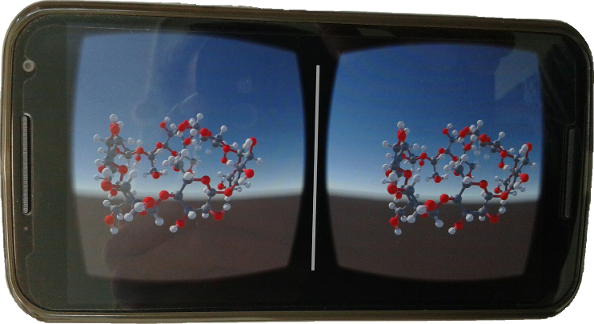
Our vision
Computational simulations of single molecules and molecular systems provide a large amount of information at atomic level that is complementary to other results obtained from, in general, expensive experiments performed in wet labs. Properly designed computational simulations are reliable and cheap, so it is inconceivable to neglect these methods in any fundamental or applied study based on inter- or intra-molecular interactions.
On the other hand, visualization of these results and of molecules in general in any field (research, education, divulgation, etc) has experience great advances in the last years. Progress in technology has given rise to new ways of viewing molecules, unimaginable only a short time ago.
Our mission
We develop original advanced software aimed to simulate and analyse the structural and dynamic behaviour of molecules and molecular aggregates.
We offer personalized computational studies of specific molecular systems aimed to design new chemical products or materials or molecular-based devices to optimize industrial processes. The methods we use are mainly based on Multiscale Molecular Dynamics (MD) simulations.
Our solutions include a new way of presenting scientific results in journals, flyers, conferences or commercial meetings. Ad-hoc apps incorporating state-of-the art technologies such as Virtual Reality (VR) and Augmented Reality (AR) mark the difference with the traditional images or videos.
Global reach
MD.USE is a global provider of scientific software and computational simulation services. We have experience in the simulation of proteins, standard or synthetic peptides, cyclic or linear oligosaccharides (in particular with cyclodextrins), lipid membranes and membrane proteins, nanopores, carbon nanotubes, graphene, surfactants in the liquid phase or at interfaces and a large variety of heterogeneous molecules.
We also develop and commercialize applications to visualize molecules using modern technologies, such as Virtual Reality, Augmented Reality and 3D-printing.
If you are interested in any service, please contact us!


